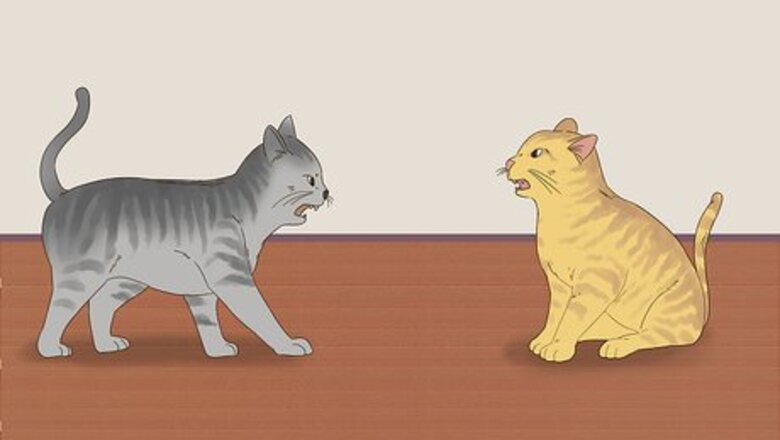
views
Observing Their Body Language
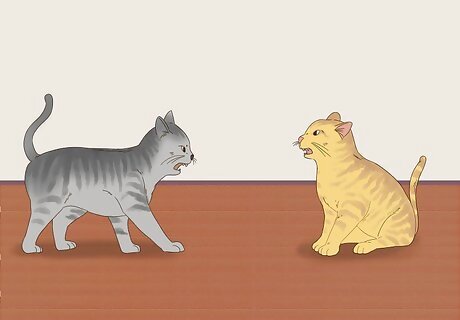
Listen for growling or hissing. In general, cats that are play fighting will not make much noise. If they do make any noises, you are more likely to hear a meow than a hiss or growl. If you hear an unending succession of growling or hissing, then your cats may be fighting.
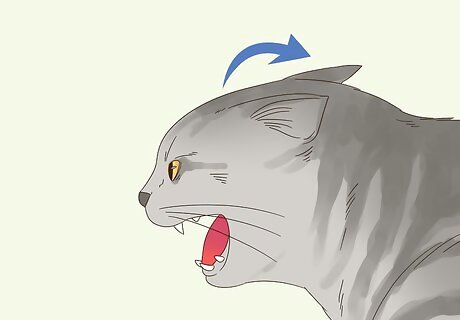
Examine their ears. During a mock fight, cats usually have their ears positioned forward or upright, or only slightly backwards. On the other hand, if you see their ears turned back or positioned back against their head, then it is highly likely that your cats are fighting.
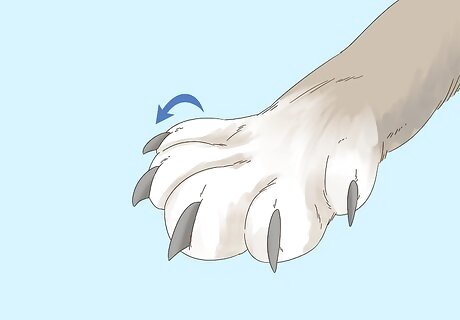
Look for claws. Cats that are playing typically have their claws sheathed or retracted most of the time. If they are unsheathed, they will not use them to intentionally hurt the other cat. On the other hand, if you see the cats using their claws to cause damage or hurt the other cat, then it is highly likely that your cats are fighting.
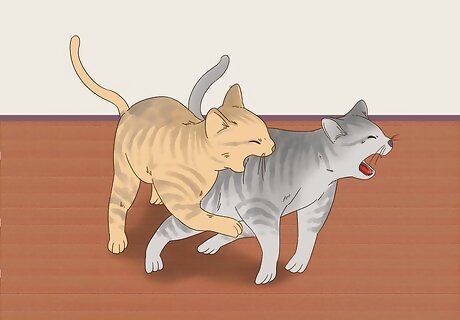
Watch for biting. During a play session, biting is often minimal and does not cause any harm. However, if you notice one cat biting the other in order to cause harm, then your cats are probably fighting instead of playing. For example, if one of the cats yelps out in pain and hisses or growls, then your cats may be engaged in a fight. Usually, when cats play, they alternate biting one another. If one cat is frequently biting another cat who is trying to get away, it is unlikely that they are playing.
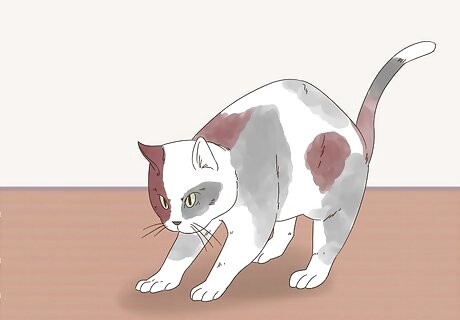
Observe their body position. Cats that are engaged in a mock fight usually have their bodies positioned forward. Alternatively, if you notice the cats leaning back as they swipe at each other, then they may be fighting.
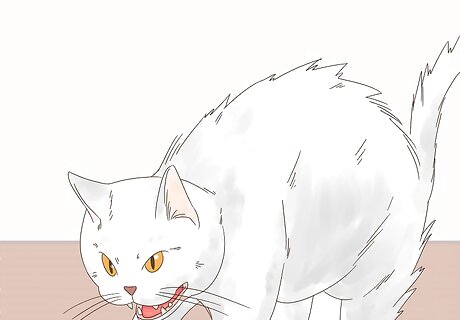
Examine their hair. Cats that are engaged in a real fight will have their hair standing on end. They do this to make themselves look bigger. Therefore, if you see puffed up hair on your cats’ tail, body or both, then they are more likely to be fighting than playing with each other.
Examining the Nature of the Fight
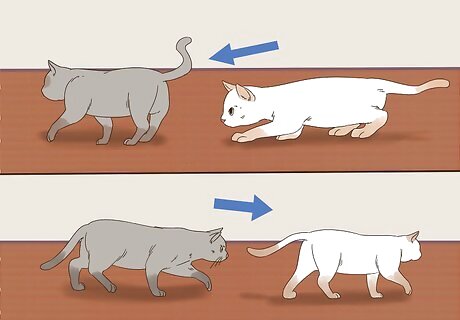
Look for reciprocity. During a mock fight, cats will take turns being on top. In other words, both cats should spend an equal amount of time being on the bottom and top. If your cats are chasing each other, then the same rule applies. They should both be chasing each other instead of one cat chasing the other the entire time.
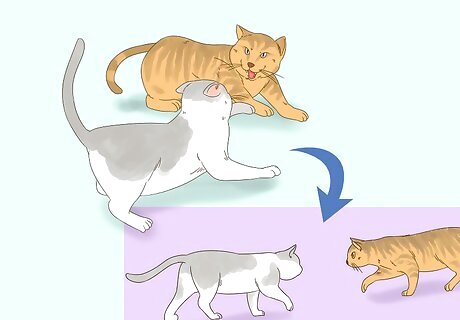
Observe the pace of the fight. Cats that are play fighting will stop and start many times. This enables them to take a break and change positions. On the other hand, cats that are fighting move at a fast pace and do not stop until one of them wins.
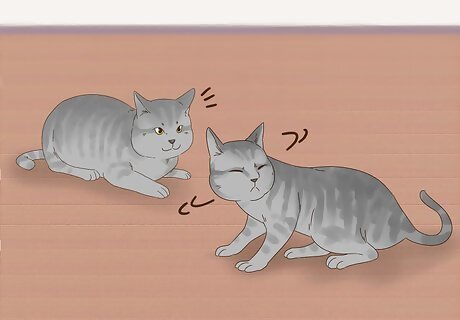
Examine their behavior afterwards. If you are still unsure if your cats are playing or fighting, observe their behavior afterwards. Cats that are fighting will avoid each other afterwards, or at least one will avoid the other. Cats that have been playing will act friendly toward each other and resume their normal behavior afterwards. They may even nap or lay down near one another.
Breaking Up a Fight

Make a loud noise. Do this by slamming a door, clapping your hands, yelling, blowing a whistle, or by banging pots or objects together to create a loud noise. Hopefully, the loud noise will distract your cats and break up the fight.
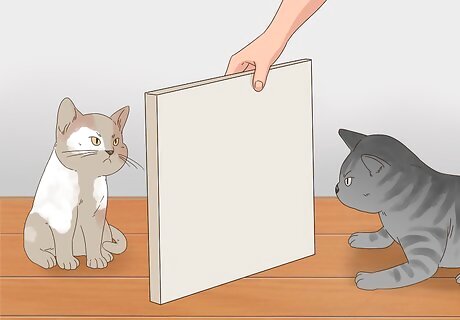
Create a barrier. Barriers are helpful because they block the cats’ view of each other. Place a cushion, piece of cardboard, or another barrier-like object in between the cats to obstruct their view of each other. Once the cats have ceased fighting, place them in separate rooms so they can calm down. You may need to slowly reintroduce the cats to each other to prevent a future fight. It is always helpful to have a baby gate handy to separate your cats. This allows you to reintroduce them and let them interact in ways where they can't harm each other.
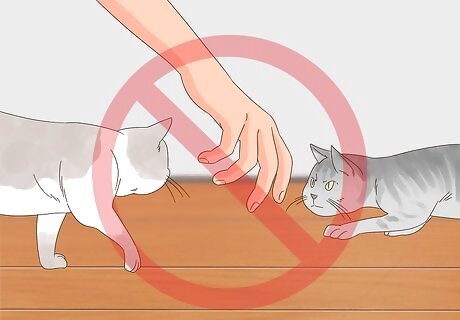
Do not break up the fight with your hands. If you put your hands in the middle of two fighting cats, you risk getting scratched or bitten. One or both of the cats may lunge toward your face as well. Additionally, one of the cats may see you and re-direct its anger on you. As a result, their behavior toward you may change even after the fight has ended. If your cat bites you, you should go to the hospital or urgent care as soon as possible. Cat bites often get infected with pasteurella strains, and they can also cause cellulitis. Early treatment is the best means or prevention.
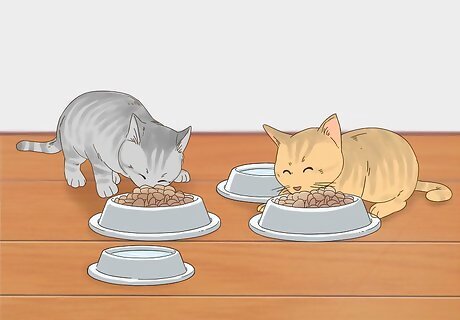
Prevent future fights. You can do this by making sure your cats do not have to compete for resources. Each cat should have its own litter box, food bowls, bed, perches, and toys in different areas of the house. Additionally, neutering or spaying your cats may help reduce fighting between them. Reward your cats with praise and treats when they interact in a friendly manner.










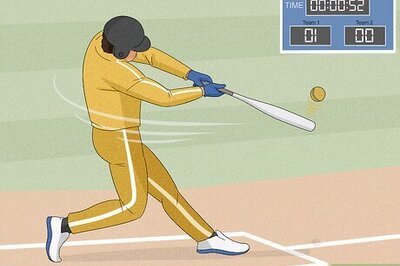









Comments
0 comment